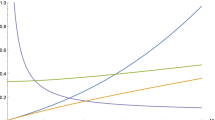Abstract. Shock tubes often experience temperature and pressure nonuniformities behind the reflected shock wave that cannot be neglected in chemical kinetics experiments. Because of increased viscous effects, smaller tube diameters, and nonideal shock formation, the reflected-shock nonidealities tend to be greater in higher-pressure shock tubes. Since the increase in test temperature (\(\Delta T_5\)) is the most significant parameter for chemical kinetics, experiments were performed to characterize \(\Delta T_5\) in the Stanford High Pressure Shock Tube using infrared emission from a known amount of CO in argon. From the measured change in vibrationally equilibrated CO emission with time, the corresponding d\(T_5/\)dt (or \(\Delta T_5\) for a known time interval) of the mixture was inferred assuming an isentropic relationship between post-shock temperature and pressure changes. For a range of representative conditions in argon (24–530 atm, 1275–1900 K), the test temperature 2 cm from the endwall increased 3–8 K after 100 \(\mu\)s and 15–40 K after 500 \(\mu\)s, depending on the initial conditions. Separate pressure measurements using a shielded piezoelectric transducer confirmed the isentropic assumption. An analytical model of the reflected-shock gas dynamics was also developed, and the calculated \(\Delta T_5\)'s agree well with those obtained from experiment. The analytical model was used to estimate the effects of temperature and pressure nonuniformities on typical chemical kinetics measurements. When the kinetics are fast (\(<300\mu\)s), the temperature increase is typically negligible, although some correction is suggested for kinetics experiments lasting longer than 500 \(\mu\)s. The temperature increase, however, has a negligible impact on the measured laser absorption profiles of OH (306 nm) and CH\(_3\) (216 nm), validating the use of a constant absorption coefficient. Infrared emission experiments are more sensitive to temperature and density changes, so \(T_5\) nonuniformities should be taken into account when interpreting ir-emission data.
Similar content being viewed by others
Author information
Authors and Affiliations
Additional information
Received 25 April 2000 / Accepted 8 September 2000
Rights and permissions
About this article
Cite this article
Petersen, E., Hanson, R. Nonideal effects behind reflected shock waves in a high-pressure shock tube. Shock Waves 10, 405–420 (2001). https://doi.org/10.1007/PL00004051
Issue Date:
DOI: https://doi.org/10.1007/PL00004051




